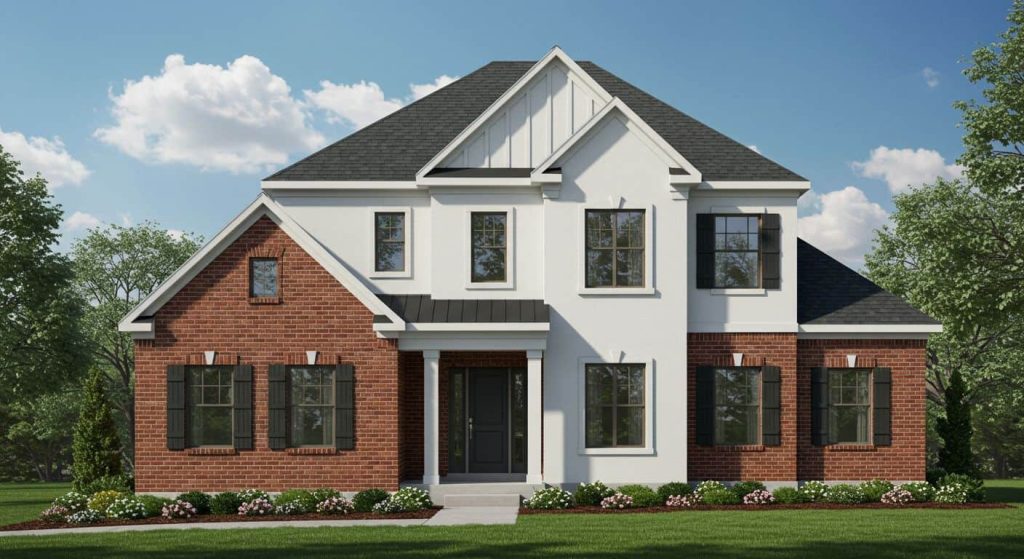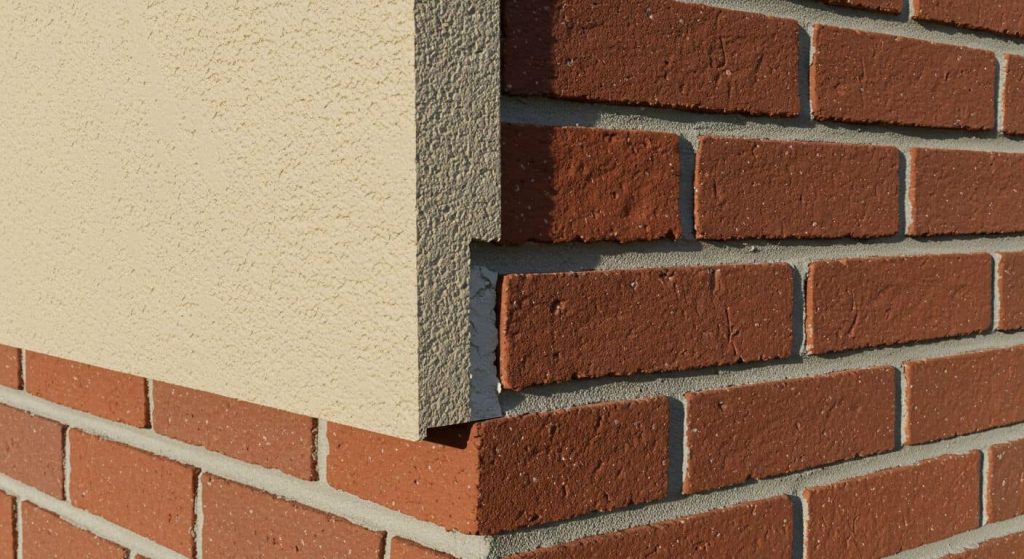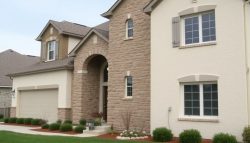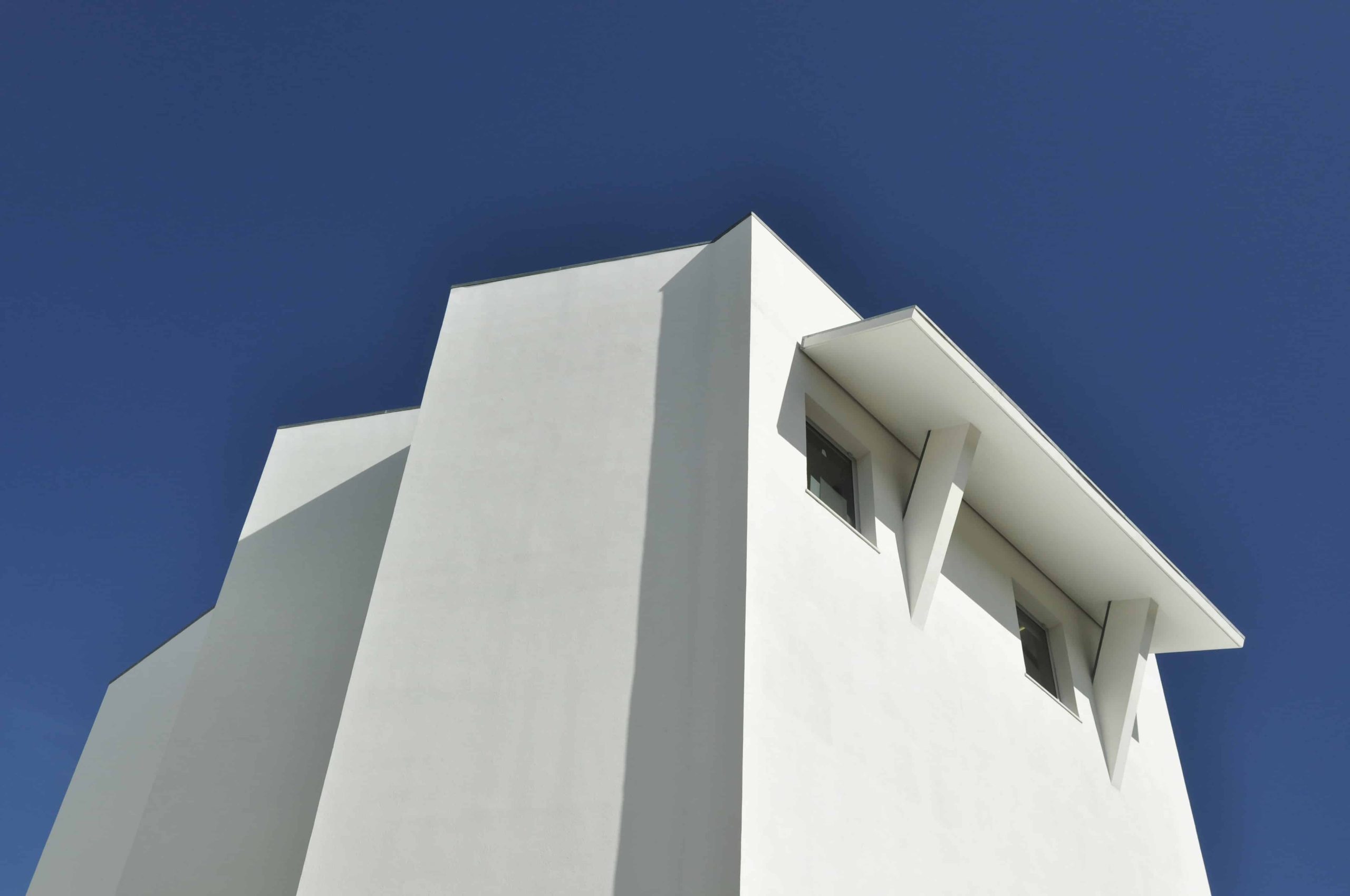The Modern Fusion Transforming Indiana Homes: Where Tradition Meets Innovation
When it comes to creating stunning exteriors that stand up to Indiana’s four-season climate, smart homeowners are mixing things up. Gone are the days when you had to choose just one exterior material for your entire home.
The latest design trend sweeping through neighborhoods from Carmel to Columbus? Hybrid exteriors that combine EIFS (Exterior Insulation and Finish System) with traditional brick. These blended facades offer the best of both worlds – the classic appeal of masonry with the energy-efficiency and design flexibility of modern EIFS.
After 22 years in the EIFS business and over 160 years of combined team experience, I’ve watched this mixed-material approach evolve from experimental to mainstream. Our Indiana Wall Systems crews are installing more of these hybrid exteriors than ever before, and for good reason.
Key Takeaways
- Hybrid EIFS-brick exteriors combine timeless appeal with modern energy efficiency
- Material transitions require professional detailing to prevent moisture problems
- Popular combinations include brick first floors with EIFS accents and upper levels
- Proper installation saves 15-30% on energy costs compared to traditional exteriors
- Hybrid designs offer 25% more color and texture options than single-material facades
Why Indiana Homeowners Are Embracing Hybrid Exteriors

When the mercury drops below freezing or soars into the humid 90s, Indiana homes take a beating. That’s why more homeowners are getting strategic about their exterior material choices.
But why mix EIFS and brick rather than choose just one? Let me explain what we’re seeing in the field.
The Perfect Marriage of Tradition and Innovation
Brick has been a staple in Indiana architecture for generations. Drive through any historic neighborhood in Indianapolis, and you’ll see century-old brick homes still standing strong. Homeowners love brick’s durability, classic appeal, and low maintenance.
Yet modern homeowners also want the benefits that traditional materials alone can’t provide:
- Superior insulation values
- Design flexibility for custom architectural details
- Lighter weight for upper stories and cantilevered features
- Creative color options beyond the limited brick palette
This is where EIFS enters the picture. As a complete wall assembly that combines insulation, reinforced base coats, and flexible finishes, EIFS delivers energy efficiency that brick alone simply cannot match.
When we blend these materials in strategic ways, homeowners get to keep the brick aesthetic they love while gaining significant performance advantages.
Curb Appeal That Stands Out
Let’s be honest – tract housing developments where every home looks identical aren’t winning any design awards. Homeowners today want their property to express their personal style.
A thoughtfully designed hybrid exterior creates visual interest through:
- Texture contrast between smooth EIFS finishes and textured brick
- Multi-dimensional facades with depth and shadow lines
- Strategic color combinations that highlight architectural features
- Custom architectural details that would be cost-prohibitive in brick
One of our recent projects in Carmel featured a traditional brick first floor with EIFS on the upper level, including custom cornices and decorative brackets that would have cost three times as much in stone or precast concrete. The result was a unique home that stood out from its neighbors while maintaining the neighborhood’s traditional character.
Popular EIFS-Brick Combinations in Indiana Homes

After working on hundreds of homes throughout central Indiana, we’ve identified several hybrid approaches that work particularly well in our climate and architectural landscape.
First Floor Brick, Upper Levels EIFS
This is the most common hybrid approach we install, and for good reason. Brick on the lower level provides durability where impact resistance matters most – near driveways, play areas, and street frontage. Meanwhile, EIFS on upper levels reduces structural load while boosting insulation where the sun hits hardest.
The weight difference matters more than you might think. A traditional brick veneer typically weighs 40-50 pounds per square foot, while EIFS weighs just 1-2 pounds per square foot. For a 2,000-square-foot second story, that’s a weight savings of up to 98,000 pounds!
This combination also creates natural shadow lines at the transition point, adding architectural interest without additional cost.
Brick Main Structure with EIFS Accent Features
Another popular approach uses brick for the main structure while adding EIFS accent features for architectural drama. Common applications include:
- EIFS quoins (decorative corner blocks)
- Window surrounds and keystones
- Entrance features and porticos
- Gable end detailing
- Bay window projections
- Custom cornices and frieze boards
This approach lets homeowners maintain the traditional brick look while adding custom decorative elements that would be prohibitively expensive in stone or precast concrete.
Modern Color-Block Designs
For contemporary homes, we’re seeing increased interest in what designers call “color blocking” – using contrasting materials to create bold geometric patterns on the facade.
Typically, this involves sections of brick interspersed with EIFS panels in complementary or contrasting colors. The clean lines of modern architecture lend themselves perfectly to this approach, with EIFS providing smooth, crisp edges that brick alone cannot achieve.
The Technical Side: Making Hybrid Exteriors Work
Beyond the aesthetic benefits, there are important technical considerations that make hybrid exteriors either a stunning success or a potential nightmare. Getting the details right is where experience really matters.

Critical Transition Points
The most vulnerable part of any hybrid exterior is where the different materials meet. These transition points must be properly detailed to prevent moisture intrusion.
In our 22 years of EIFS installation, we’ve refined several approaches to creating seamless transitions:
- Properly integrated flashing systems
- Carefully designed drip edges
- Appropriate expansion joints
- Continuous water-resistive barriers behind different cladding types
- Vapor-permeable weather barriers that prevent moisture entrapment
When these details are executed by experienced professionals, the transition becomes both visually appealing and technically sound.
Energy Performance Considerations
One reason hybrid exteriors are gaining popularity is their superior energy performance. When properly installed, an EIFS system delivers continuous insulation that eliminates thermal bridging – a common issue with traditional brick construction.
In brick-only construction, thermal bridges occur at each framing member, reducing overall energy efficiency. By strategically incorporating EIFS, we can create a more effective thermal envelope, particularly on the sides of the home that receive the most solar exposure.
| Exterior System | R-Value | Annual Energy Cost Savings* | Moisture Management | Design Flexibility |
|---|---|---|---|---|
| Traditional Brick Only | R-4 to R-5 | Baseline | Good | Limited |
| EIFS Only | R-5 to R-16+ | 15-30% | Excellent with drainage plane | Extensive |
| Hybrid Brick/EIFS | R-5 to R-16+ (variable) | 10-25% | Excellent with proper detailing | Maximum |
*Based on typical 2,500 sq ft Indiana home compared to traditional brick veneer
Climate-Specific Considerations for Indiana
Indiana’s climate presents specific challenges for exterior systems. We experience everything from sub-zero winters to humid 90°F+ summers, plus frequent freeze-thaw cycles that stress building materials.
In this environment, hybrid exteriors allow strategic material placement based on exposure. For example, on west-facing walls that receive harsh afternoon sun, EIFS provides better insulation. For north-facing walls exposed to winter winds and moisture, brick offers excellent durability.
Design Strategies for Stunning Hybrid Exteriors
Creating a cohesive look with multiple materials takes careful planning. Based on our extensive project portfolio, here are the design approaches that yield the most successful results.
Complementary Color Selection
The color relationship between brick and EIFS finishes will make or break a hybrid design. We generally recommend one of three approaches:
- Monochromatic harmony – Using EIFS in a slightly lighter or darker shade from the same color family as the brick
- Complementary contrast – Pairing warm-toned brick with cool-toned EIFS (or vice versa)
- Neutral base with accent color – Using neutral brick with a more vibrant EIFS accent color
The most successful combinations acknowledge the surrounding landscape and neighborhood context. In wooded settings, earth tones tend to work best, while lakefront properties can handle brighter, more reflective finishes.
Architectural Style Considerations
Different architectural styles lend themselves to different approaches to material blending:
Traditional/Colonial:
- Brick on the main facade
- EIFS for decorative elements like columns and cornices
- Formal symmetry with EIFS highlighting key features
Craftsman/Bungalow:
- Brick on the lower portion
- EIFS with texture in gables and upper stories
- Natural, earthy color palettes
Contemporary/Modern:
- Bold geometric patterns
- Clean transitions between materials
- Minimal ornamentation with focus on material contrast
Transitional Designs:
- Traditional proportions with modern details
- Simplified EIFS trim elements
- Strategic use of texture to bridge old and new aesthetics
Texture Interplay
The textural contrast between brick and EIFS creates visual interest, especially when thoughtfully implemented. Smooth EIFS finishes can dramatically offset textured brick, creating a pleasing visual tension.
Conversely, textured EIFS finishes can complement smoother brick surfaces. The key is intentional contrast rather than accidental clashing.
Some of our most successful projects use texture to create hierarchy – smooth EIFS for primary architectural elements, with textured brick providing a visually “heavier” base.
Real-World Examples from Indiana Communities
Throughout central Indiana, we’re seeing distinctive regional variations in how hybrid exteriors are implemented. Here’s what’s trending in different communities:
Carmel and Zionsville: Elegant Traditionalism
In Carmel’s high-end neighborhoods like the Village of WestClay, hybrid exteriors typically feature traditional brick with classical EIFS details. These sophisticated designs include:
- Formal symmetry with EIFS quoins and keystones
- Decorative EIFS cornices and frieze boards
- Traditional proportions with modern energy performance
- Subtle, sophisticated color palettes
In Carmel’s upscale communities, homeowners value the traditional aesthetic while embracing modern performance – and their hybrid exteriors reflect this balance.
Fishers and Noblesville: Transitional Contemporary
The newer developments in Fishers showcase a more transitional approach, blending traditional elements with contemporary lines. Common features include:
- Mixed materials with cleaner lines
- Less ornamentation but more dramatic massing
- Bold color blocking with neutral palettes
- Simplified EIFS details with more geometric forms
These homes reflect the younger demographic of these communities, with exteriors that feel fresh and modern while maintaining some traditional elements.
Downtown Indianapolis: Urban Contemporary
In urban Indianapolis neighborhoods experiencing revitalization, hybrid exteriors take on a distinctly contemporary character:
- Industrial-inspired brick with sleek EIFS panels
- Bold, sometimes unexpected color combinations
- Minimal ornamentation with focus on material contrast
- Modern interpretations of traditional forms
These designs often reference the city’s industrial heritage while adding thoroughly modern elements through EIFS applications.
Installation Expertise: Why Experience Matters
Creating successful hybrid exteriors requires specialized knowledge that bridges multiple disciplines. Many contractors excel at either brick or EIFS, but few have mastered the integration of these systems.
At Indiana Wall Systems, our 22 years of specialized EIFS experience has taught us that proper integration of different cladding systems requires both technical knowledge and artistic sensibility.
The Water Management Challenge
The most critical aspect of hybrid installations is comprehensive water management. Each cladding system handles water differently:
- Brick is porous and requires a cavity for drainage
- EIFS with drainage planes channels water to specific exit points
- Flashing details must accommodate both systems’ requirements
When these systems meet, the water management strategies must be harmonized. Our installation teams use specialized techniques to ensure water is properly managed at every transition point.
Expansion and Contraction Considerations
Another key consideration is how different materials respond to temperature changes. Brick and EIFS expand and contract at different rates, requiring properly designed expansion joints at transition points.
These joints must be technically sound while remaining visually unobtrusive – a balance that requires both engineering knowledge and aesthetic judgment.
Substrate Preparation
Before any cladding is installed, the substrate must be properly prepared. This is particularly important in hybrid systems where different cladding types may require different preparation:
- Brick veneer typically requires structural support through ties to the framing
- EIFS requires clean, stable sheathing with properly installed water-resistive barriers
- Transition areas need special attention to flashing and waterproofing
Our installation teams are trained to prepare each section of the facade according to both manufacturer specifications and our own exacting standards based on decades of field experience.
Maintenance Considerations for Hybrid Exteriors
One of the benefits of hybrid exteriors is the ability to place low-maintenance materials in hard-to-reach areas. However, each material does have specific maintenance requirements that homeowners should understand.
Brick Maintenance
Traditional brick requires relatively little maintenance, but periodic attention to:
- Mortar joint inspection and repointing as needed (typically every 25-30 years)
- Cleaning to remove efflorescence (white powder) that can appear on surfaces
- Sealing in severe weather exposure areas (optional but beneficial)
EIFS Maintenance
Modern EIFS systems also require minimal maintenance, focusing on:
- Annual visual inspections for any damage or sealant failures
- Cleaning with gentle pressure washing when needed
- Sealant replacement at joints and penetrations (typically every 7-10 years)
Transition Points
The most critical maintenance areas are where materials meet. Homeowners should pay special attention to:
- Sealant joints between different materials
- Flashing integrity at material transitions
- Signs of water staining that might indicate drainage issues
With proper installation and minimal maintenance, a hybrid exterior should provide decades of trouble-free performance while maintaining its visual appeal.
Cost Considerations: Investment vs. Value
Hybrid exteriors typically represent a middle ground in terms of initial investment, while offering significant long-term value.
Initial Investment Comparison
| Exterior System | Average Cost/Sq Ft (Materials + Installation) | Relative Initial Investment |
|---|---|---|
| Traditional Brick Only | $25-35 | Highest |
| EIFS Only | $20-28 | Medium |
| Hybrid Brick/EIFS | $22-32 | Medium-High |
The exact cost depends on design complexity, material selections, and architectural details. However, hybrid systems often provide cost efficiencies by using premium materials strategically rather than throughout the entire exterior.
Long-Term Value Proposition
While initial costs are important, the true value proposition emerges when considering long-term benefits:
- Energy savings of 15-30% annually through strategic EIFS placement
- Reduced maintenance costs with materials placed appropriately
- Enhanced curb appeal translating to better resale value
- Greater design flexibility without entire-facade premium material costs
- Improved comfort through elimination of thermal bridging
For many Indiana homeowners, these long-term benefits easily justify the initial investment in a properly designed hybrid exterior.
Environmental Benefits of Hybrid Exteriors
Beyond aesthetics and performance, hybrid exteriors offer significant environmental advantages when thoughtfully designed.
Reduced Environmental Footprint
By combining materials strategically, hybrid exteriors can reduce environmental impact through:
- Lower embodied energy by limiting high-energy materials to where they’re most needed
- Reduced transportation energy when using locally sourced brick with lightweight EIFS
- Extended building lifecycle through improved durability and adaptability
- Lower operational energy use through improved thermal performance
Energy Efficiency
The most significant environmental benefit comes through improved energy performance. A properly designed hybrid exterior can reduce heating and cooling energy use by 15-30% compared to traditional brick construction.
This translates to both cost savings for homeowners and reduced carbon emissions over the building’s lifetime. For a typical Indiana home, this could mean:
- 2-4 ton reduction in carbon emissions annually
- Thousands of dollars in energy savings over the home’s lifecycle
- Reduced strain on the electrical grid during peak demand periods
Sustainable Material Choices
Modern EIFS systems increasingly incorporate sustainable materials:
- Recycled content in base coats and meshes
- Low-VOC finishes and adhesives
- Responsibly sourced insulation materials
When combined with locally produced brick, these materials can significantly reduce the ecological footprint of the exterior envelope.
How to Get Started with a Hybrid Exterior
If you’re considering a hybrid exterior for your Indiana home, here’s a roadmap to help you navigate the process successfully.
Design Exploration
Start by collecting images of homes that appeal to you, paying attention to how different materials are combined. Look for:
- Successful transitions between materials
- Color and texture combinations you find appealing
- Architectural styles similar to your home
- Regional examples that perform well in our Indiana climate
This exploration phase helps clarify your preferences and provides useful reference points for discussions with professionals.
Professional Consultation
Next, consult with experienced professionals who understand both the aesthetic and technical aspects of hybrid exteriors. At Indiana Wall Systems, our consultations typically include:
- Site evaluation to understand your home’s specific conditions
- Discussion of design goals and preferences
- Review of material options and performance characteristics
- Preliminary ideas for material placement and transitions
- Budget considerations and value engineering options
This consultation should give you a clear picture of what’s possible for your specific home.
Material Selection
With a design direction established, the next step is selecting specific materials:
- Brick style, color, and texture
- EIFS finish type, texture, and color
- Transition details and trim elements
- Complementary elements like soffits, fascia, and gutters
Seeing full-size samples in your home’s natural lighting is essential, as colors and textures can appear dramatically different in various lighting conditions.
Finding Qualified Installers
The most beautiful design will fail without proper installation. Look for contractors who can demonstrate:
- Specific experience with hybrid exteriors
- Certification from major EIFS manufacturers
- Knowledge of local building codes and climate considerations
- A portfolio of similar projects
- Detailed specifications for transition details
At Indiana Wall Systems, our specialized EIFS installation teams are trained in the specific techniques required for successful hybrid exteriors. We understand both the technical requirements and aesthetic considerations that these sophisticated systems demand.
The Future of Hybrid Exteriors in Indiana
As we look ahead, several trends are emerging in the hybrid exterior space that Indiana homeowners should watch.
Emerging Design Trends
The next generation of hybrid exteriors is evolving in several exciting directions:
- More dramatic texture contrasts between ultra-smooth EIFS and richly textured brick
- Bolder color statements as homeowners grow more confident with material combinations
- Increased use of prefabricated EIFS elements for more complex architectural details
- Integration of other materials like metal panels and fiber cement alongside brick and EIFS
- Regional style evolution as distinctly Indiana hybrid aesthetics emerge
Technological Advancements
The materials themselves continue to advance, with innovations including:
- Higher-performance insulation within EIFS systems
- Advanced water management for more resilient building envelopes
- Smart facade components that respond to environmental conditions
- More sustainable material options with reduced environmental impact
- Enhanced finish durability for longer service life
Climate Adaptation
As Indiana’s climate continues to change, hybrid exteriors offer important adaptive advantages:
- Increased resilience to more frequent extreme weather events
- Better management of more variable precipitation patterns
- Improved performance in higher summer temperatures
- Adaptability to changing energy performance requirements
These adaptive capabilities make hybrid exteriors a forward-looking choice for Indiana homeowners concerned about long-term performance.
FAQs
Can EIFS be added to my existing brick home?
Yes, EIFS can be successfully added to your existing brick home. This retrofit approach is one of our most common projects at Indiana Wall Systems. We typically add EIFS to upper stories, as accent features, or to create architectural details that would be cost-prohibitive in stone or precast concrete. The key to success is proper transitional detailing between materials, ensuring water management systems are integrated correctly. With professional installation, EIFS additions can transform your brick home while improving energy efficiency and adding unique design elements.
How much energy savings can I expect with a hybrid brick-EIFS exterior?
Most Indiana homeowners see energy savings of 10-25% with hybrid brick-EIFS exteriors compared to traditional brick-only construction. The exact savings depend on your home’s design, orientation, and where EIFS is strategically placed. Homes that use EIFS on west-facing walls or upper stories often see the highest efficiency gains. The continuous insulation provided by EIFS eliminates thermal bridging common in traditional construction, dramatically reducing heat transfer through your walls in both summer and winter.
What maintenance does a hybrid brick-EIFS exterior require?
Hybrid brick-EIFS exteriors are designed for low maintenance. Brick portions typically need mortar inspections every 25-30 years, while EIFS requires annual visual checks for any damage and sealant replacement every 7-10 years. The most important maintenance focus is the transition points between materials – ensure sealants remain intact and watch for any signs of water staining. With proper installation and these simple maintenance steps, your hybrid exterior should provide decades of trouble-free performance while maintaining its visual appeal.
Are hybrid exteriors more expensive than single-material exteriors?
Hybrid exteriors typically cost $22-32 per square foot installed, positioning them between full-EIFS ($20-28) and full-brick ($25-35) exteriors. However, the true value comes from using premium materials strategically rather than throughout the entire facade. This approach offers better long-term returns through energy savings, reduced maintenance costs, and enhanced curb appeal. Many of our Indiana clients find that hybrid exteriors deliver the best balance of upfront investment and long-term value, especially when EIFS is used for complex architectural details.
How do I choose the right color combination for brick and EIFS?
The most successful brick-EIFS color combinations follow one of three approaches: monochromatic harmony (using EIFS in a slightly lighter or darker shade from the same color family as the brick), complementary contrast (pairing warm-toned brick with cool-toned EIFS), or neutral brick with accent-colored EIFS. Consider your home’s architectural style, the surrounding landscape, and neighborhood context when making selections. At Indiana Wall Systems, we provide color renderings during the design phase to help visualize how different combinations will look on your specific home.
Conclusion: The Best of Both Worlds
The growing popularity of hybrid brick-EIFS exteriors in Indiana represents more than just a passing design trend. It reflects a thoughtful evolution in how we approach residential exteriors in our challenging four-season climate.
By strategically combining the timeless durability of brick with the energy efficiency and design flexibility of EIFS, homeowners can create exteriors that are:
- Aesthetically distinctive
- Energy efficient
- Climate appropriate
- Durably constructed
- Environmentally responsible
At Indiana Wall Systems, we’ve embraced this hybrid approach because we’ve seen firsthand how it solves real problems for Indiana homeowners. By leveraging the strengths of each material and minimizing their limitations, we can create exteriors that truly offer the best of both worlds.
Whether you’re building new or reimagining your existing home, a thoughtfully designed hybrid exterior might be the perfect solution to balance tradition with innovation, performance with aesthetics, and initial investment with long-term value.
About the Author: Jeff Johnson is the CEO of Indiana Wall Systems, with 22 years in the EIFS business and over 160 years of combined team experience. Indiana Wall Systems specializes in EIFS installation, inspection, and repair throughout Indiana, Kentucky, Ohio, Tennessee, Michigan, and Illinois.
Ready to explore hybrid exterior options for your Indiana home? Contact us today at (765) 341-6020 for a FREE consultation or visit our contact page to schedule an appointment.





